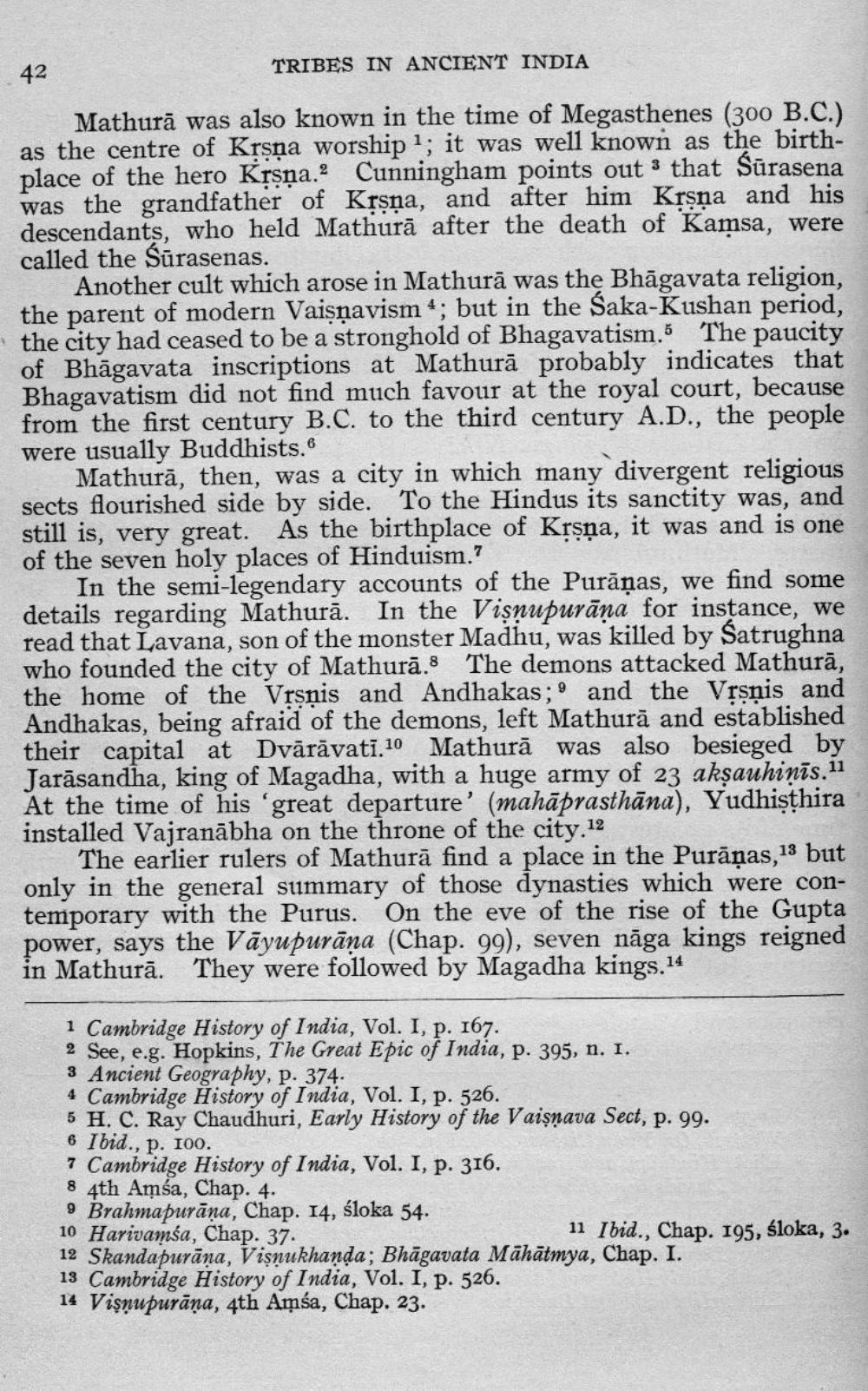________________
42
TRIBES IN ANCIENT INDIA
Mathurā was also known in the time of Megasthenes (300 B.C.) as the centre of Krsna worship 1; it was well known as the birthplace of the hero Krsņa.2 Cunningham points out 3 that Śūrasena was the grandfather of Krsna, and after him Krsna and his descendants, who held Mathurā after the death of Kamsa, were called the Sūrasenas.
Another cult which arose in Mathurā was the Bhāgavata religion, the parent of modern Vaisņavism *; but in the Saka-Kushan period, the city had ceased to be a stronghold of Bhagavatism. The paucity of Bhāgavata inscriptions at Mathurā probably indicates that Bhagavatism did not find much favour at the royal court, because from the first century B.C. to the third century A.D., the people were usually Buddhists.
Mathurā, then, was a city in which many divergent religious sects flourished side by side. To the Hindus its sanctity was, and still is, very great. As the birthplace of Krsņa, it was and is one of the seven holy places of Hinduism.?
In the semi-legendary accounts of the Purāņas, we find some details regarding Mathurā. In the Vişnupurāņa for instance, we read that Lavana, son of the monster Madhu, was killed by Satrughna who founded the city of Mathurā.8 The demons attacked Mathurā, the home of the Vrsnis and Andhakas; ' and the Vrsnis and Andhakas, being afraid of the demons, left Mathurā and established their capital at Dvārāvati.10 Mathurā was also besieged by Jarāsandha, king of Magadha, with a huge army of 23 akşauhinīs.i1 At the time of his 'great departure' (mahāprasthāna), Yudhisthira installed Vajranābha on the throne of the city.12
The earlier rulers of Mathurā find a place in the Purāṇas,13 but only in the general summary of those dynasties which were contemporary with the Purus. On the eve of the rise of the Gupta power, says the Vāyupurāņa (Chap. 99), seven nāga kings reigned in Mathurā. They were followed by Magadha kings.14
i Cambridge History of India, Vol. I, p. 167. 2 See, e.g. Hopkins, The Great Epic of India, p. 395, n. 1. 3 Ancient Geography, p. 374. 4 Cambridge History of India, Vol. I, p. 526. 5 H. C. Ray Chaudhuri, Early History of the Vaisnava Sect, p. 99. 6 Ibid., p. 100. 7 Cambridge History of India, Vol. I, p. 316. 8 4th Amśa, Chap. 4. 9 Brahmapurāna, Chap. 14, śloka 54. 10 Harivamśa, Chap. 37.
11 Ibid., Chap. 195, sloka, 3. 12 Skandapurāņa, Visnukhanda; Bhāgavata Māhātmya, Chap. I. 13 Cambridge History of India, Vol. I, p. 526. 14 Vişnupurāna, 4th Amśa, Chap. 23.




